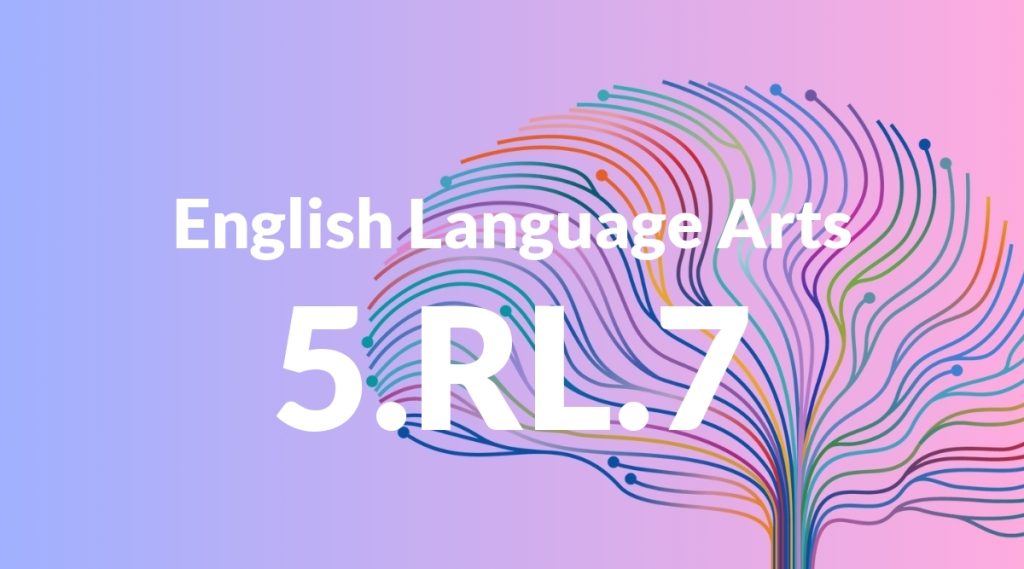Standard: 5.RL.7 – Analyze how visual and multimedia elements contribute to the meaning, tone, or beauty of a text (e.g., graphic novel, multimedia presentation of fiction, folktale, myth, poem).
Grade level: Grade 5
Subject: English Language Arts
Domain: Reading: Literature
Teacher Overview
This standard emphasizes the importance of understanding how visual and multimedia elements enhance the meaning, tone, and beauty of a text. By mastering this standard, students will be able to appreciate the interplay between text and visual media, a crucial skill in today’s multimedia-rich world. Students should have a solid understanding of basic literary elements and experience with different types of texts. They should also be able to identify and describe visual elements in texts.
After mastering this standard, students will be able to critically evaluate how various elements of a text work together to create meaning and apply this understanding to more complex texts in higher grades.
Common Misconception 1
Some students may think that visual and multimedia elements are merely decorative and do not contribute to the text’s meaning. This misconception overlooks the significant role these elements play in enhancing and clarifying the text.
Intervention 1
Use examples from graphic novels and multimedia presentations to show how visual elements can change the interpretation of a text. Discuss these examples in class to highlight their importance.
Common Misconception 2
Another common misconception is that all visual and multimedia elements contribute equally to the text’s meaning. This is incorrect as some elements may have a more profound impact than others.
Intervention 2
Encourage students to analyze specific elements and their contributions to the text. Use guided questions to help them see that some elements are more critical than others.
Prerequisite Knowledge
Students should be familiar with basic literary elements such as plot, character, and setting. They should also have experience with different types of texts, including stories, poems, and informational texts.
Subsequent Knowledge
Students will develop the ability to critically evaluate how various elements of a text work together to create meaning and will be able to apply this understanding to more complex texts in higher grades.
Instructional Activities
- Create a graphic novel page and analyze its visual elements
- Watch a multimedia presentation of a folktale and discuss its impact
- Illustrate a poem and explain how the illustrations add to its meaning
- Compare a book and its movie adaptation, focusing on visual and multimedia elements




